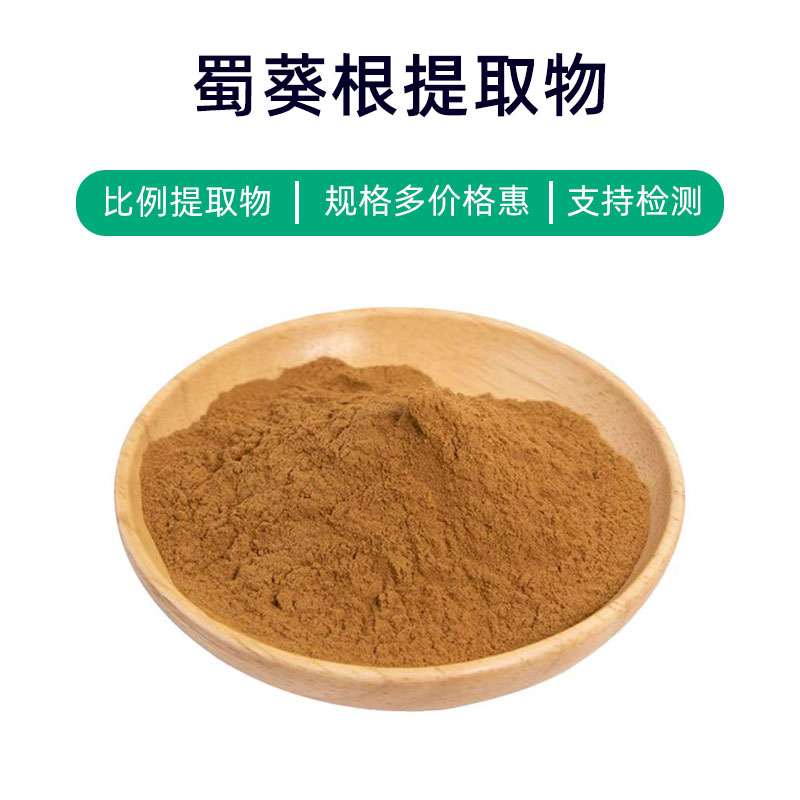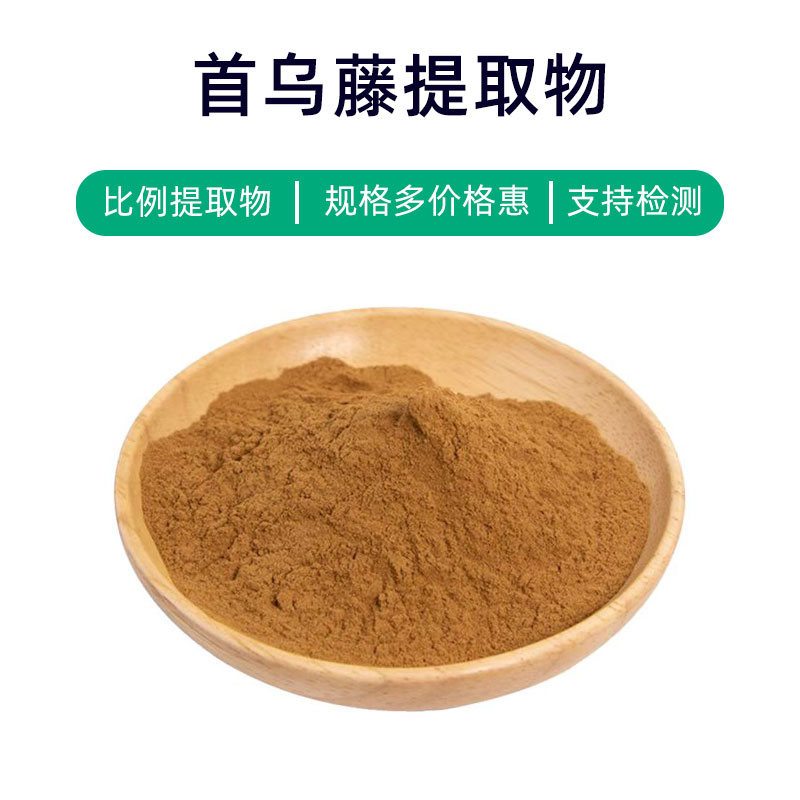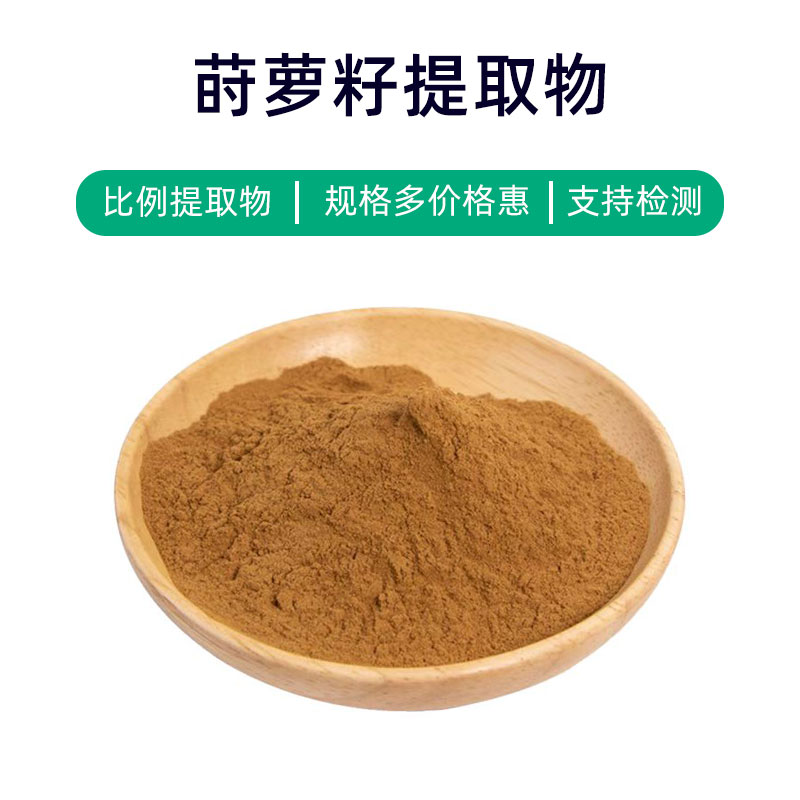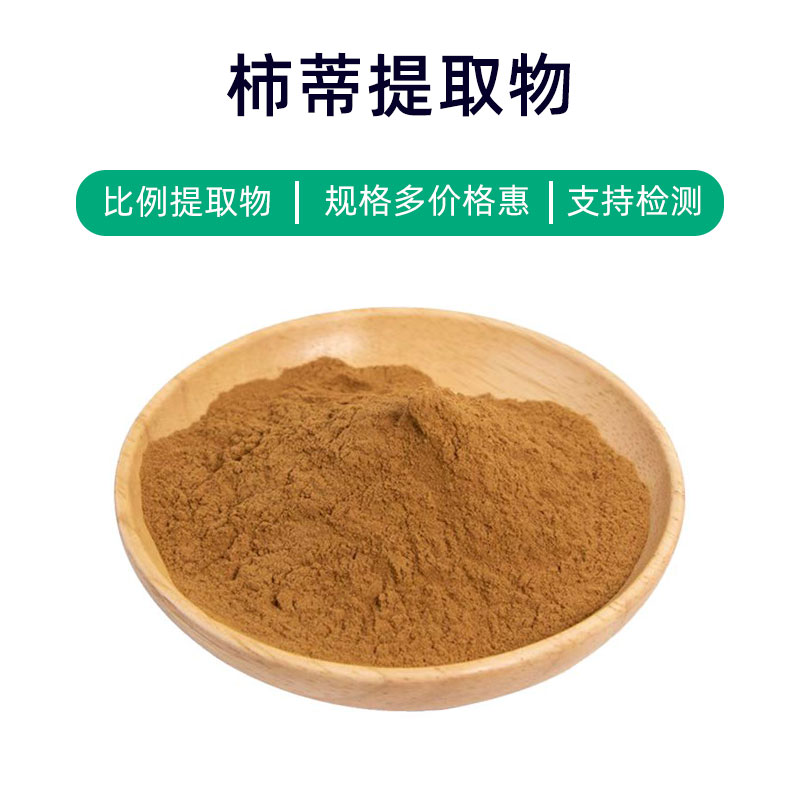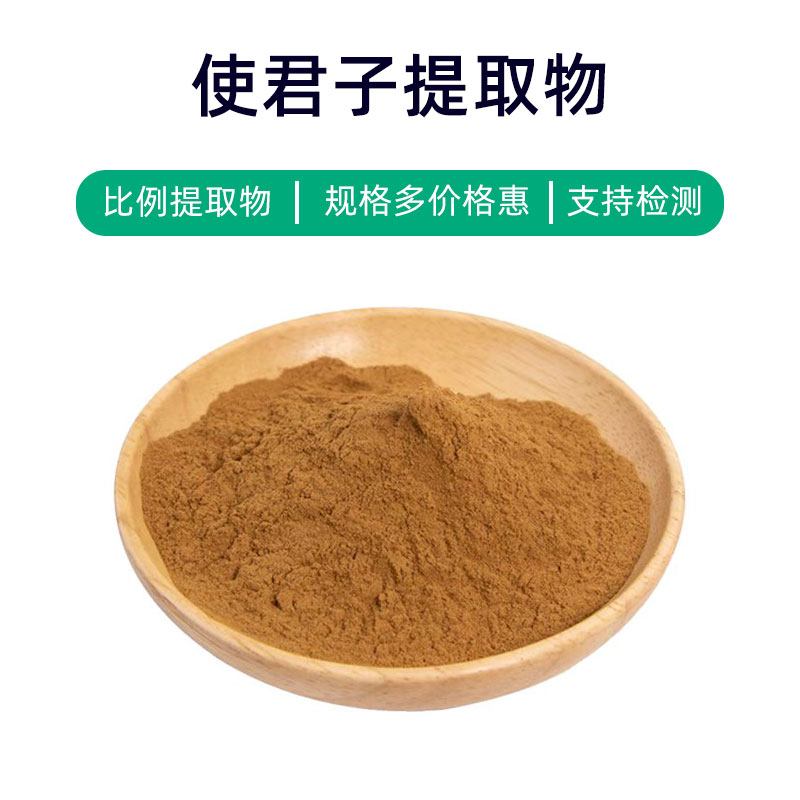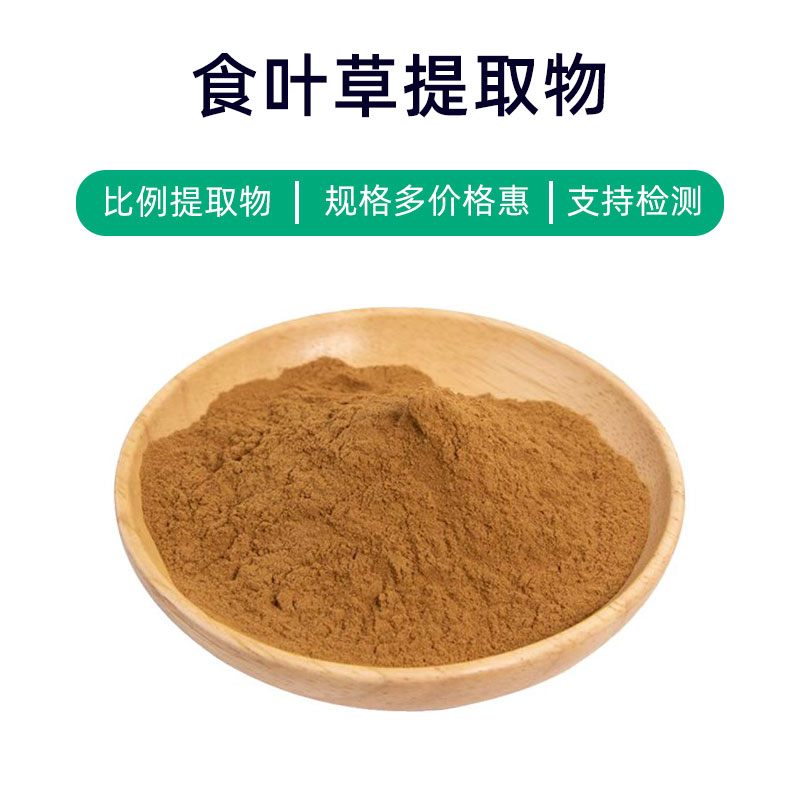Introduction to Rhizoma Polygoni Cuspidati Extract
Rhizoma Polygoni Cuspidati Extract is a natural plant extract derived from the rhizome of the snake bed plant. Its main ingredients include flavonoids, polyphenols, and tannins, which contribute to its various benefits and applications.
Firstly, Rhizoma Polygoni Cuspidati Extract exhibits antioxidant and anti-inflammatory properties, helping to combat free radical damage, reduce oxidative stress on the skin, protect against environmental damage, and slow down the aging process of the skin.
Secondly, it also has skin-whitening and pigment-lightening effects, inhibiting melanin formation, reducing pigmentation, and resulting in a more even skin tone and finer skin texture.
Additionally, Rhizoma Polygoni Cuspidati Extract has a wide range of applications in medicine, commonly used in health products and medicines such as oral supplements and anti-inflammatory drugs. In skincare and cosmetic products, it is often added to facial skincare products, body lotions, and masks to improve skin texture, reduce fine lines and wrinkles, and enhance skin elasticity and glow.
Overall, Rhizoma Polygoni Cuspidati Extract is a multifunctional natural plant extract with antioxidant, anti-inflammatory, skin-whitening, and skincare properties, suitable for applications in medicine, health products, skincare, and cosmetics.
Production Process for Rhizoma Polygoni Cuspidati Extract
The production process for Rhizoma Polygoni Cuspidati Extract generally involves the following steps:
- Material Preparation: First, select fresh rhizomes of the snake bed plant as raw materials, conducting preliminary washing and processing to remove impurities and surface dirt.
- Grinding: Crush or grind the cleaned rhizomes to create smaller particles, enhancing extraction efficiency.
- Extraction: Use suitable extraction solvents (such as ethanol or water) to extract the active components from the plant, typically employing methods such as steeping or reflux extraction.
- Filtration and Separation: Filter the extract through a sieve or centrifuge to remove solid impurities, obtaining a clear extract.
- Concentration: Concentrate the clear extract, usually through evaporation or vacuum concentration, removing the solvent to acquire a concentrated product.
- Purification: Further refine the concentrated extract using techniques like crystallization, freeze separation, or solvent extraction to remove impurities and enhance product purity.
- Drying: Dry the purified extract to eliminate remaining solvents and moisture, resulting in a dry extract.
- Packaging and Storage: Finally, package the dried extract, typically in sealed containers to prevent exposure to oxygen, moisture, and light, and store it in a dry, cool, dark environment to ensure product quality and stability.
This is a basic production process for Rhizoma Polygoni Cuspidati Extract, and specific techniques may vary depending on the manufacturer's processes and equipment.
Benefits and Side Effects of Rhizoma Polygoni Cuspidati Extract
As a traditional herbal medicine, Rhizoma Polygoni Cuspidati Extract has various benefits and functions, primarily reflected in the following areas:
- Anti-inflammatory Effects: Contains several compounds with anti-inflammatory properties that can inhibit the release of inflammatory mediators, alleviating symptoms of inflammatory diseases.
- Analgesic and Anti-itch Properties: The effective components can regulate the nervous system, providing pain relief and alleviation of itchiness, suitable for treating skin irritations like eczema and hives.
- Antimicrobial Action: Contains multiple compounds that exert antibacterial effects on various bacteria and fungi, useful for treating skin infections.
- Antioxidant Effects: Rich in natural antioxidants, this extract can eliminate free radicals, slow down cellular aging, and help boost the immune system.
- Immune Regulation: Active ingredients can modulate the immune system, enhancing overall immune function and aiding in the prevention and treatment of immune-related diseases.
- Liver Protection: This extract may help protect the liver, alleviating liver damage and promoting the regeneration of liver cells, which can assist in the treatment of hepatitis and cirrhosis.
- Blood Lipid Regulation: The effective components can help regulate lipid metabolism, lowering blood lipid levels and preventing cardiovascular diseases.
While Rhizoma Polygoni Cuspidati Extract has numerous benefits, users should also be aware of potential side effects, such as allergic reactions or digestive issues. It is best to consult a doctor or pharmacist before use, adhering to recommended dosages to avoid adverse reactions.
Application Scenarios and Dosage of Rhizoma Polygoni Cuspidati Extract
Rhizoma Polygoni Cuspidati Extract has widespread applications in medicine, food, and cosmetics. Here are the specific applications and recommended dosages in each field:
- Medical Field:
- Treatment of Skin Conditions: Used for eczema, itching, and dermatitis, typically applied as an ointment or lotion on the affected area 1-2 times per day.
- Anti-inflammatory and Pain Relief: For conditions like arthritis or rheumatism, apply Rhizoma Polygoni Cuspidati preparations for local massage or heat treatment, using about 3-5 milliliters per application, 2-3 times daily.
- Food Sector:
- Nutritional Supplements: Can be used in health products like oral liquids or capsules, with a daily recommended dosage of 3-5 grams, taken in 2-3 divided doses before or after meals.
- Functional Foods: Add to functional beverages like health teas or wellness drinks, following product formulation guidelines.
- Cosmetic Field:
- Skincare Products: Its anti-inflammatory and antioxidant properties make it suitable for sensitive skin and improving skin texture. Recommended usage is an appropriate amount applied to clean facial skin.
- Washing Products: Can be added to shampoos or body washes to soothe the scalp and alleviate itchiness, with dosages following product formulation requirements.
It is essential to use Rhizoma Polygoni Cuspidati Extract according to instructions or medical advice in any application, avoiding excessive or improper use to prevent adverse reactions. Individuals with allergies should use caution and conduct skin tests prior to use.
Description, Distribution, and Growth Environment of the Source Plant of Rhizoma Polygoni Cuspidati
Snake bed (scientific name: Polygonum multiflorum Thunb.) is a perennial climbing plant belonging to the buckwheat family, commonly used in traditional medicine. Below is an introduction to the source plant of Rhizoma Polygoni Cuspidati, including its description, distribution, and growth environment:
Plant Description:
Snake bed is a climbing plant with long, flexible stems that can grow by wrapping around other objects. The leaves are ovate or elliptical and opposite, with long petioles. The small white flowers are arranged in a cone-shaped inflorescence and have a pleasant fragrance. The fruit is a brown triangular achene containing seeds.
Distribution:
Originally native to southern China, snake bed is primarily found in the Yangtze River Valley, various southern provinces, and Taiwan. It is also distributed in Japan, Vietnam, South Korea, and other regions. Due to its medicinal value, it has been cultivated in other areas, such as Southeast Asia and South America.
Growth Environment:
- Climate: Snake bed thrives in warm, humid climates, adapting well to sunny environments but also tolerating partial shade.
- Soil: It prefers soft, fertile, well-draining sandy loam but is not very demanding regarding soil type.
- Altitude: Typically grows in mountainous and hilly areas at elevations of 200-1000 meters, but can also be cultivated at lower altitudes.
Snake bed commonly grows on hillsides, by streams, and in fields, often seen in farmland, forest edges, grasslands, and along roadsides. Its growing season is in spring and summer, with flowering occurring in autumn. In southern China, snake bed is a common wild plant and is often cultivated in medicinal gardens or backyards for medicinal and ornamental purposes.
Processing and Storage of Rhizoma Polygoni Cuspidati Extract
The processing of Rhizoma Polygoni Cuspidati Extract typically involves several steps: first, fresh snake bed plants are collected, then cleaned, air-dried, or oven-dried. Next, the dried plants are crushed and ground to prepare for extraction. Finally, effective components are extracted using appropriate methods, such as water extraction, ethanol extraction, or supercritical fluid extraction, to produce the Rhizoma Polygoni Cuspidati Extract.
For storage, Rhizoma Polygoni Cuspidati Extract should be kept in a cool, dry place, away from direct sunlight and humid environments. Additionally, it should be packaged in tightly sealed containers to prevent moisture and impurities from entering. Proper storage can extend the shelf life of the extract and maintain the stability of its active components.
Monica Sun is a seasoned expert in the plant extraction industry with over a decade of experience in research and production. She specializes in the extraction and purification of plant active ingredients, focusing on driving innovation in natural product applications. Monica has participated in the development of multiple functional plant extracts, delivering high-value natural raw material solutions for the health food, pharmaceutical, and dietary supplement sectors.









